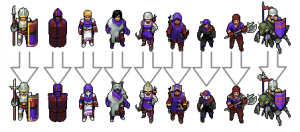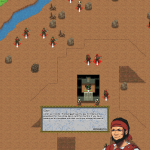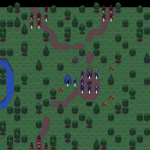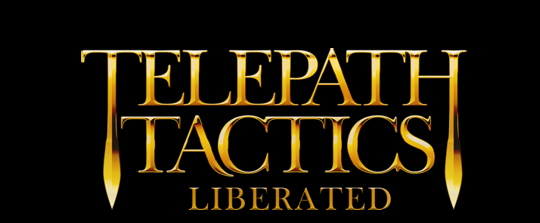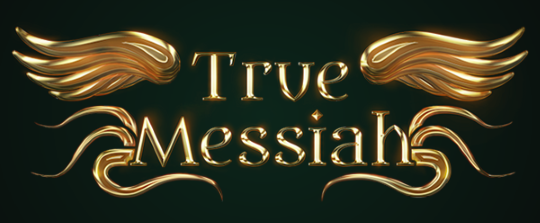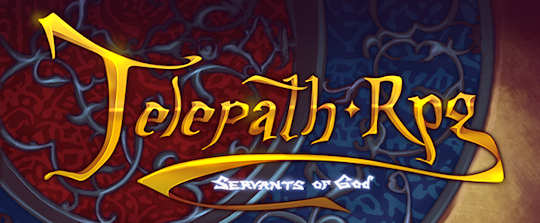Wow, is July gone already? I guess that means it’s time for another monthly update!
Perhaps the single most exciting thing (from my perspective) that happened in July was “Tactics Jam,” a 6-hour intensive workshop I ran on how to mod Telepath Tactics. Basically, I gave a small group of Chicago game developers a guided introduction to using the map editor, and to editing data within the Telepath Tactics framework.
There was a surprising amount to cover–so much so that after two hours of introduction, when I let everyone break off and start experimenting, there was almost zero overlap in terms of what people subsequently focused on! Rob Lockhart (whom you might know as the developer behind Codemancer) immediately started work on programming a Turing machine using the Telepath Tactics scripting system; Don Alsafi began constructing elaborate dialog trees in the dialog editor for an interactive adventure game; and Ryan Wiemeyer (of The Men Who Wear Many Hats) began work on a tactical campaign with Organ Trail graphics, tiles, objects, items, and attacks.
In essence, I think I’ve finally nailed one of my big goals with Telepath Tactics: to make it incredibly powerful and flexible for modders (to say nothing of developers who want to make their own, full-fledged games). Still, watching so many people work has helped motivate me to make a number of significant improvements to the map editor. The tools are good, but they can always be better!
Let’s talk about what’s new in the game:
- We’ve now got draft promotion sprites for a lot more of the game’s character classes! A sampling of what some of the game’s character classes will look like after they’re promoted:
- Significant map editor improvements! You can now edit triggers, tags, and inventory when placing a new character or object in the map editor. Even better, I’ve finally added Edit Character and Edit Object functions, so you can now change just about every aspect of anything on the battlefield, on the fly, right in the editor, after it’s been placed. Here’s a short video showing the new hotness:
- I’ve added some new cut scenes to the game, plus two new battles! The first battle is a mission that appears only if you complete a side objective earlier in the game; it provides an opportunity to gain experience and recruit up to two new characters. The second battle is the game’s first defensive fight, in which you have to protect your base from waves of attackers. (Notably, this second battle marks the first in-game use of the tent object, first discussed back in November.)
- New characters in the single player campaign. The total number of player characters that can be recruited in the campaign now stands at 11, and will only continue to rise from here!
- AI improvements:
- First, healers now have planning routines; which is to say, they’ll move around with the goal of reaching hurt allies that aren’t within immediate move-and-heal range.
- Second, CPU-controlled characters will now intelligently equip items they possess into empty equipment slots. (This includes items they’ve found and grabbed off the battlefield–meaning that if a character dies, then an enemy can swoop in, pick up, and equip their items!)
- Third, I made an important optimization to passive AI routines; the game now spends way less time processing potential moves for passive characters if it finds that there are no enemies within move-and-attack range. (This last change is especially important for characters with long-range attacks on large maps.)
- Telepath Tactics composer Ryan Richko has sent me a draft of the game’s final boss music. It’s not finished yet, but suffice it to say that I’m feeling pretttttttty good about it!
- New tag: DisplayInfo. DisplayInfo makes player-owned objects display their health and energy. Essentially, DisplayInfo is for letting players keep track of the health of objects that they need to protect or destroy to win a battle (such as a base, or a sacred statue).
- New tag: ID. This tag gives a character a unique identifying number. This allows scripts to be run on particular generic characters on the battlefield via the new special character ID[]. Without going into excessive detail, this combination tag-and-special-character allows me to run scripts on specific characters on the battlefield who do not have unique names. (Just to name one example of the ID tag’s utility: this allows me to remove the “Passive” AI tag from a specified group of generic enemies all at once, instead of allowing the player to just inch along, aggro-ing individual enemies one by one, turn by turn.)
- I’ve expanded script actions IfStat and SetStat with the ability to both read and individually edit character string stats (specifically: name, class, sprite type, portrait, facing direction, and movement type).
- New script action: RotateCharTowardPoint. This rotates the named character to automatically face a particular set of coordinates on the battlefield.
- Updated the manual with documentation of all the new goodies, fixed some errata concerning the design requirements of original character sprites, and fixed incomplete descriptions of various aspects of the dialog, reply and scripting systems.
- Fixed a bunch of bugs. (But let’s be honest, you knew that already.)
If this month’s update seems short compared to months past, it’s partly because of a series of unexpected events this month (including two separate, week-long, largely unplanned visits from my mother!) Beyond that, though, the game is simply not in need of very many new features at this point. Development is more focused on content creation than ever–and of course, that means being vague about new additions for purposes of not spoiling the game.
It is my hope going forward that with the character and object editing features now present in the map editor, I’ll be able to crank out the game’s (increasingly complex) missions with greater efficiency as we head toward winter. Until next time!
